Sake Splash: Kyoto Beer Series
Beer beginners, have no fear!
Welcome back to Sake Splash with Eda!
Let’s talk about the elephant in the room.
You might be asking yourself, “why are we talking about beer on Sake Splash?” Well, sake doesn’t just represent the sake we all know and love (brewed from rice). The sake we know in the western world goes by nihonshu or seishu in Japan. BUT, the word sake, in Japan, can be used to describe any kind of alcohol. Technically, shochu, wine, beer, whiskey, and much more can be called “sake”. Here at Sake School of America, we like to take sake in the broad sense. We can learn so much more about alcohol by keeping our minds and cups open. So, from time to time, you’ll see different types of drinks pop up as features on Sake Splash.
With that out of the way…
Nothing screams SUMMER more than ice-cold BEERS! I am so excited to feature our first series of ji-beer (地ビール) in my blogs! You’ve never heard of ji-beer before? Well, settle in and get ready to crack open some cold ones as we explore the fizzy, deliciousness of craft beer brewed in Japan. The “ji” (地) in ji-beer is the same as the “ji” in jizake (地酒), meaning local or regional. There is no better set of ji-beer to introduce than the Kyoto beer series. These beers incorporate uniquely Japanese ingredients and techniques into their products to create a beautiful blend of east meets west, new meets old. The familiar taste of beer collides with traditional Japanese flavors resulting in products like their noteworthy Matcha IPA.
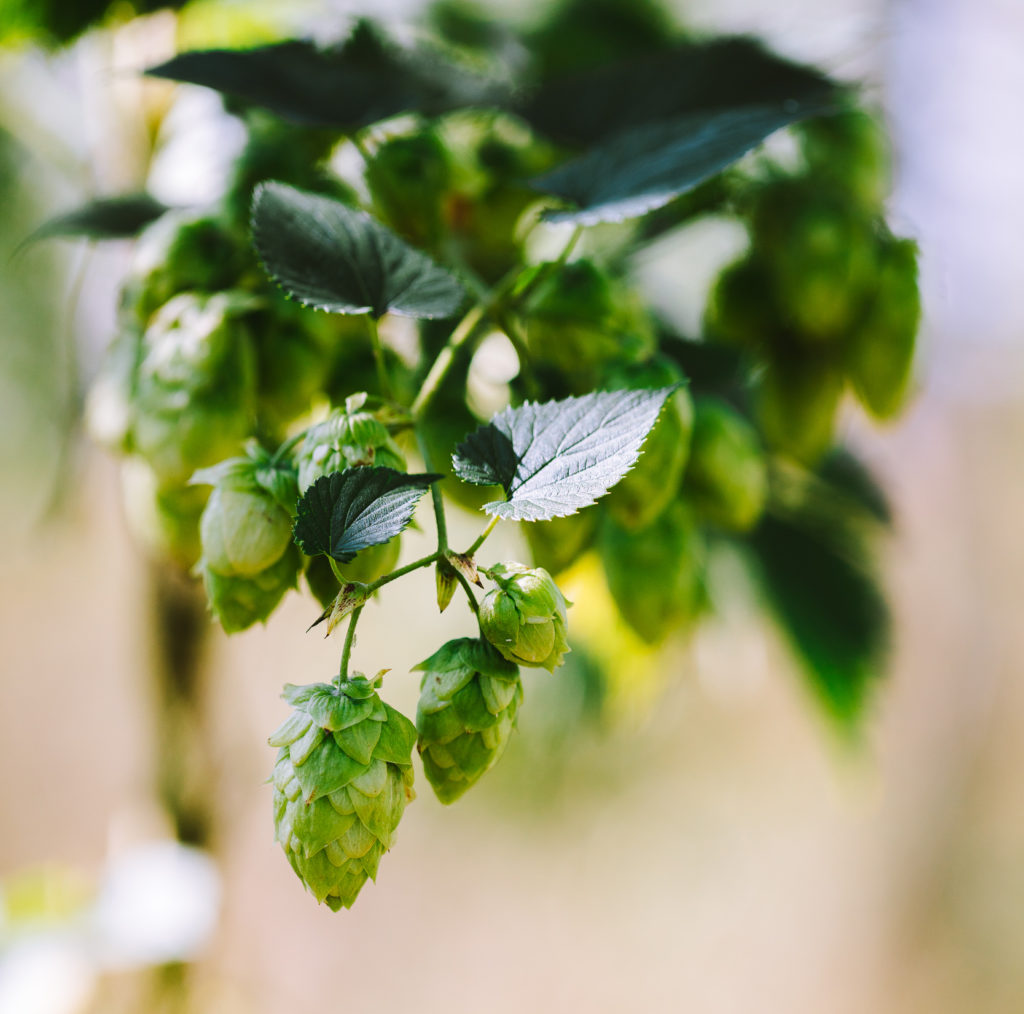
Photo: Allagash Brewing Co.
A few things to keep in mind…
Before we hop into the main focus, let’s build our beer knowledge and foundations. I encourage you to do your own research but for the sake of the article, I will keep things short and simple.
_____• There are two main types of beer: ales and lagers. These two types of beer mainly differ in the yeasts used and the fermentation process. Ales tend to be full-bodied, fruity in aroma, and hoppy. Lagers, on the other hand, are light, crisp, and refreshing.
_____• Malt is cereal grains that have been germinated and dried. During the malting process, the starches are converted to sugars. Beers are usually made with malted barley, but they can be made with other grains as well.
_____• Adjuncts are commonly defined as “a non-malt source of fermentable sugars” that has been added to the beer-making process, such as oats, pumpkin, and honey. The term adjunct(s) has also been used in a broader sense to include spices and other non-starch-based ingredients.
edit (07/30/2020): The technical term for ingredients that add flavor but have little to no fermentable sugars are called additives. Think of spices, herbs, or some fruits. The term additives can be a little off-putting to the common consumer, so please choose your words wisely 😉
_____• Hops are little, “cone-shaped flowers of the female hops plant, aka Humulus lupulus.” While not necessary in beer making, they impart flavor, depth, bitterness, and most importantly, they help with extending the life of a beer. Hops come in a variety of types and the timing of their addition during the brewing process can affect the flavors and aromas produced.
_____• SRM or Standard Reference Method is “a scale devised by scientists to describe how light or dark a beer is.” I will be referencing the SRM when talking about the color of the beers.
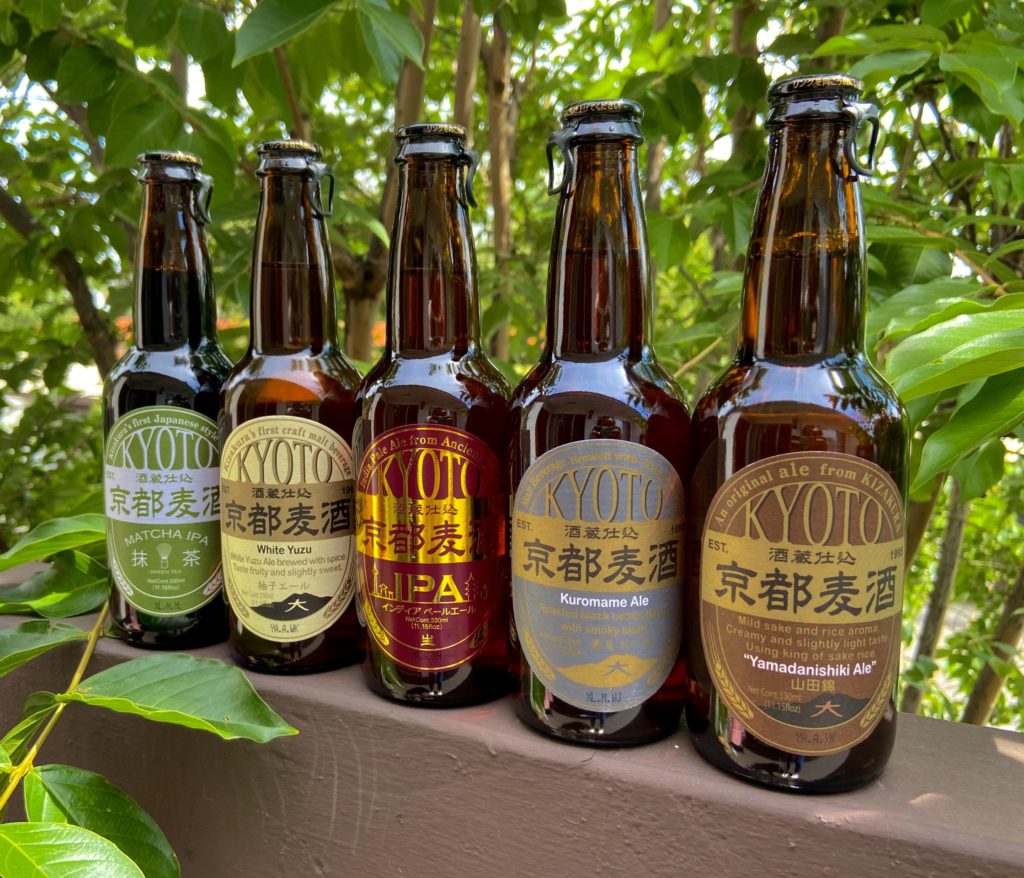
Kizakura Brewery
The Kyoto beer series is produced by Kizakura Brewery, located in Fushimi, Kyoto Prefecture. Kizakura was founded in 1925 but officially established as a business in 1951. Kizakura is first and foremost a sake brewery but their operations were expanded to also include ji-beer in 1995. These became the very first craft beers in Kyoto! The really cool thing about this brewery is that they take the technology used for sake brewing and apply it to the production of their beers! The details of production remain a trade secret, but it is clear that some beers from the series draw inspiration from sake. An interesting fact about these ales is that they are produced using the same pure water also utilized in Kizakura’s sake production.
Kyoto Beer
I was able to get my hands on 5 out of the 6 available ale varieties (from Mutual Trading Company) in the Kyoto beer series. We will be tasting our way through their Yamadanishiki Ale, White Yuzu Ale, Kuromame Ale, Kyoto IPA, and their Matcha IPA. I’ll pour out a little more information on each drink as we go along.
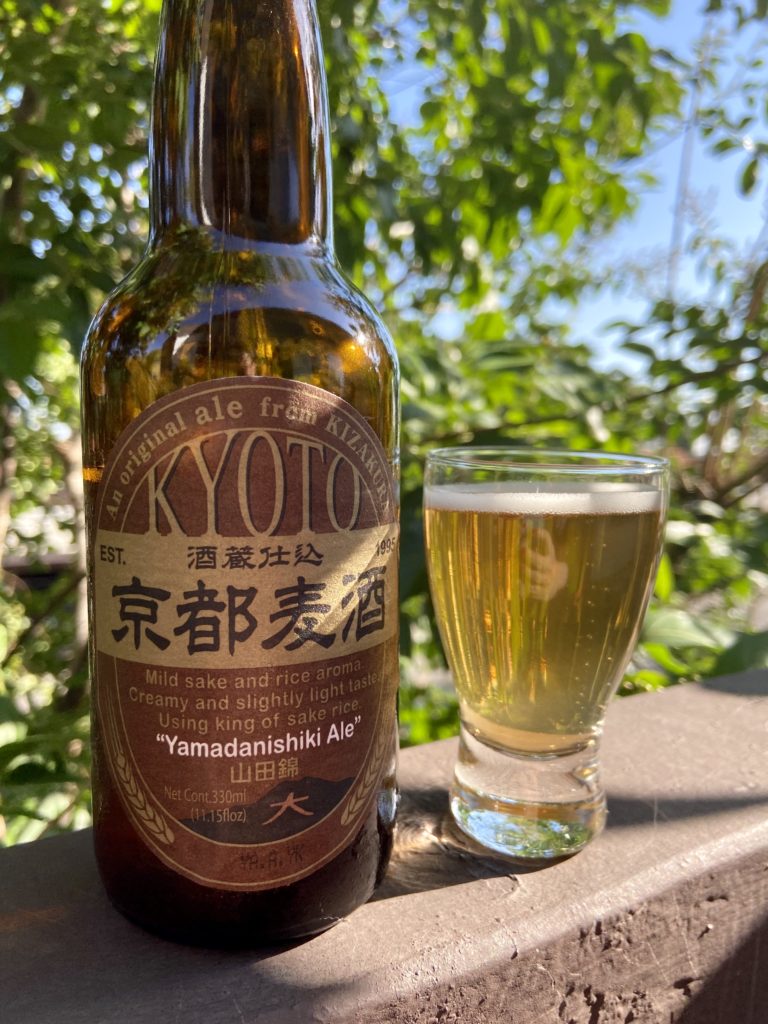

Have you ever come across a rice beer? How about a beer brewed using the famous king of sake rice, Yamadanishiki? This ale is perfect for the beer beginner! It’s interesting, it’s different, but it’s approachable and easy to drink.
The color is a clear light yellow. I would say the SRM is a 2 or 3. The nose on this beer is light and clean, with hints of white flowers. Very reminiscent of sake. The mouthfeel is soft, creamy, and lush with a delicate rice flavor and gentle bitterness on the finish. The carbonation isn’t too strong, but just right for this beer. It is a refreshing drink, perfect to start a meal or wind down after work with.
I see this beer pairing well with foods that are light in umami, such as chicken, salted grilled white fish, and Caprese salads. Kushi-age (panko-covered fried skewers of meat and veggies) type foods would be delicious with this light beer!
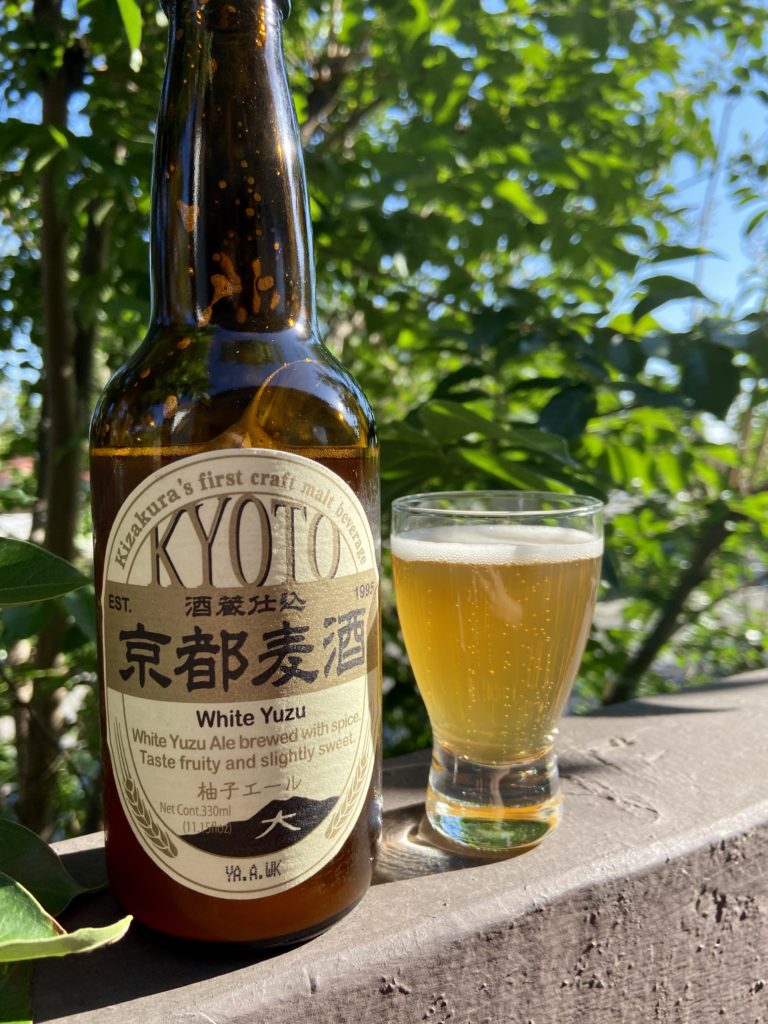

The Kyoto White Yuzu Ale is a Belgian White Ale or Witbier (white beer). How does this differ from the Yamadanishiki Ale we just tried? Simply put, a white beer is an unfiltered, top-fermented (like ales) wheat beer spiced with coriander and citrus, in this case, Japanese Yuzu.
The color on this beer is a hazy medium yellow, bordering a deep straw. The SRM is a solid 4. The nose on this Belgian White is speckled with peppery notes of coriander, soft sweet wafts of yuzu, and jasmine flower. On the palate, this beer is lively with juicy citrus, slight acidity, and a stronger carbonation than the previous beer. The bitter finish is also a little stronger. This White Yuzu Ale is a fruitier alternative to the Yamadanishiki Ale, but still just as light, creamy and approachable.
I can imagine myself snacking on some tempura, french fries, or prosciutto while sipping on this beer! Break out those cheese platters and crudité. This beer would also go well with spicy foods and help freshen the palate when eating sushi and sashimi.
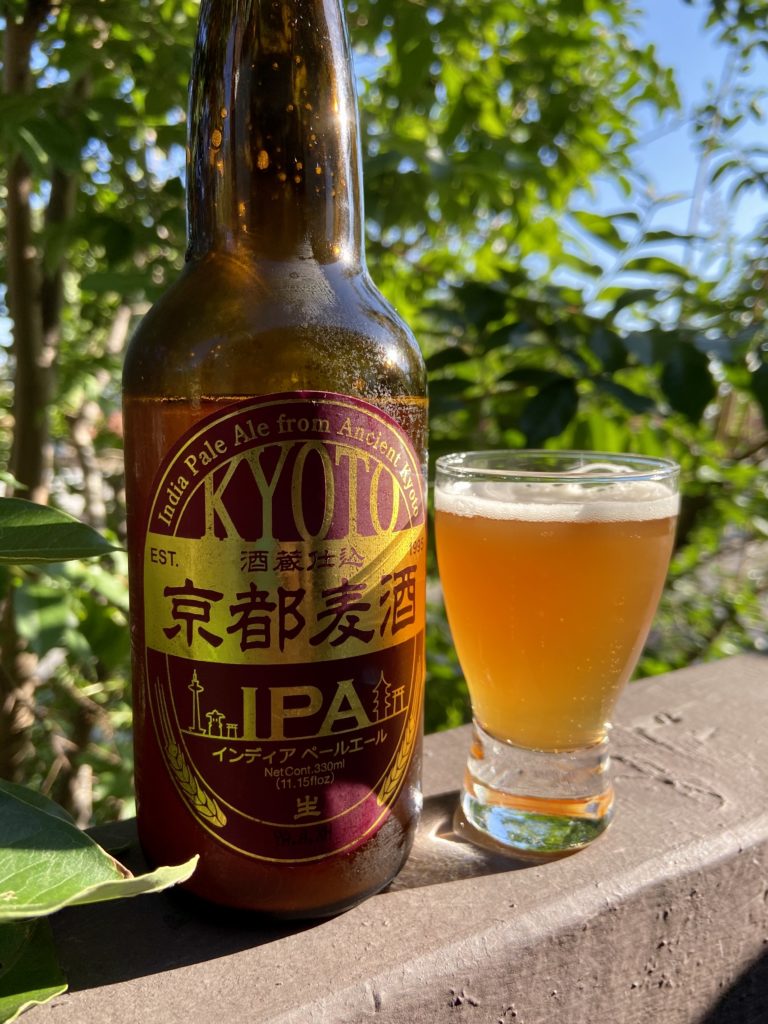

India Pale Ales (IPA) are named so as they were created to export from Britain to India. To keep the beers from spoiling during the long journey, extra hops were added to act as a preservative. This resulted in more fruit and bitter forward beers, but just keep in mind not all IPAs are created equally and there are many different styles within the IPA category!
The Kyoto IPA is a slightly hazy, gorgeous coppery deep amber, around an SRM of 8 or 9. The scent really perks you up with fragrant bright lemon and grassy notes from the hops. It tastes just as refreshing as it sounds! Flavorful, full bodied, and bitter! But it’s an attractive bitterness that plays well with the beer. The aftertaste and mouthfeel of this is nicely rounded and clean. This is probably my favorite out of the five beers we are tasting today!
With a crisp beer like this, I immediately want to eat all the oily, greasy, delicious things out there. Pass me a fresh burger, fried chicken (especially saucy Korean fried chicken), meat lover’s pizza, ramen, and whatever else you can think of! This IPA will complement many foods but also cleanse your palate for the next bite.
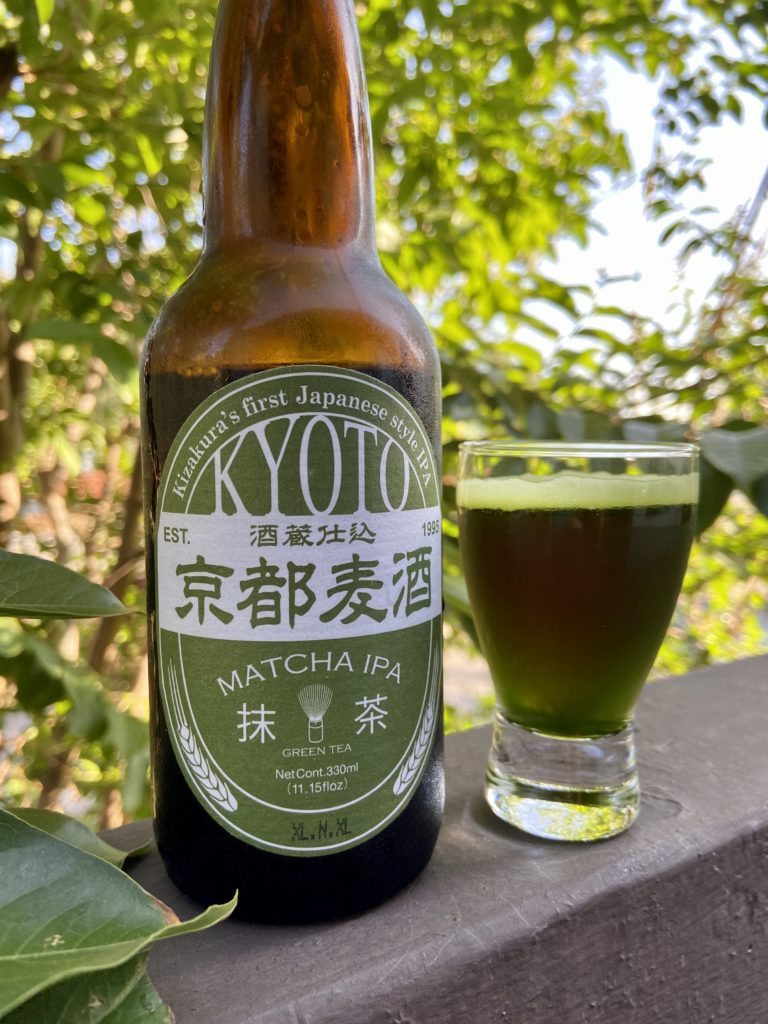


Matcha in beer? You could say it’s a matcha made in heaven… Puns aside, I was super excited when I poured this IPA into a glass. It’s everything I thought it would be and more. Kyoto is an area known for preserving Japanese history and traditions, which is why I think this brewery is amazing for utilizing both traditional and modern ideas to create original products like this Matcha IPA.
This is one beautiful beer! It’s a clear, vivid, deep grassy green. That trademark matcha green. I’ll refrain from putting this on the SRM scale as it isn’t a usual beer color. What I can say is that this beer smells amazing! It’s a mix of matcha green tea, mint, fresh sweet cream, and malty undertones. On the palate, this beer is full bodied, round, soft, creamy, and with the signature IPA bitterness. Again, it’s a pleasant bitterness that complements the overall design and flavors of this beer. I also picked up some herbaceous flavors and mandarin orange pith notes while tasting this IPA.
This beer is perfect for those HEAVY, strongly flavored and spiced dishes. I’m dreaming of this beer with a kotteri (rich, thick, heavy type) tonkotsu ramen, garlicky gyoza, and well-seasoned BBQ. The herbal flavors of this beer also pair well with similar flavors found in Italian cuisine. I would also love this with tempura served alongside matcha salt.
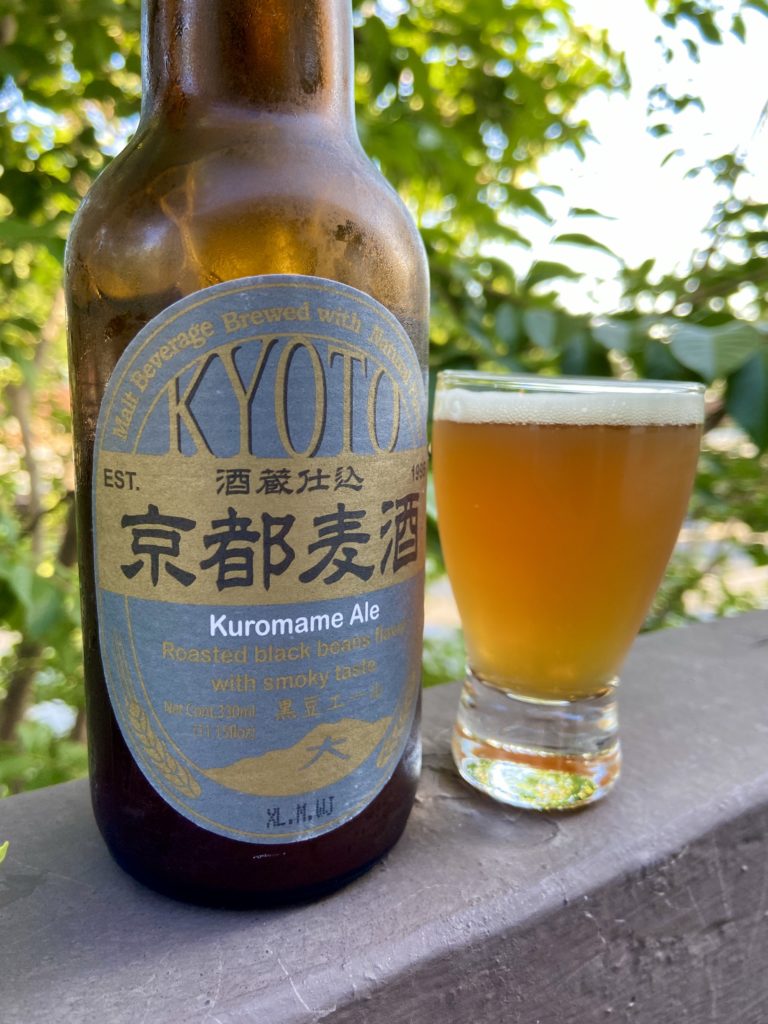

Last but not least, Kyoto Kuromame Ale! The unique adjunct for this beer is roasted black soybeans, AKA kuromame. Tanba City in Kyoto is known for its black soybeans, so what better to put in the Kyoto beer series?
This is a lovely, slightly hazy, warm copper-colored ale. I would put this around an SRM range of 10 – 12. The nose is comprised of smoky roasted soybean, cocoa powder, and caramel notes. I would have to say this beer is suited for those who enjoy a more mature, dark, savory flavor. It’s light but full-bodied and a little sweet on the finish. I think this beer might garner more hesitation from beginners than the previous beers we tasted, but let me assure you that it’s actually quite easy to drink and that you should definitely give it a try! If anything, you’ll have bragging rights to having drank a beer made with kuromame!
This ale is going to be fantastic with smoky foods like sausages, BBQ, and beef jerky. I’m particularly thinking about Chinese sausages with sweet spices! I would definitely recommend cooking beef stew with this beer if not, pairing it together.
Final Thoughts
I never thought I would be a beer girl but… these ji-beer have me looking at beer in another light. I am really looking forward to reviewing the final flavor of this series, Kyoto Kura no Kaori Ale, when I get my hands on it.
The Kyoto beer series definitely knocked it out of the park for me. I had such a fun time learning about what each one had to offer. There was something different and exciting about each beer. I also really enjoyed the uniquely Japanese ingredients and inspiration they brought to the table. These beers were all creamy, light, and so easy to drink! These are perfect for anyone looking for a way into the world of beer, especially this summer.
If you’ve never tried a ji-beer before, why not start with one from the Kyoto beer series?
Let us know in the comments what kind of Japanese craft beers you’ve tried or which of these Kyoto beers intrigue you the most!
Please drink responsibly and we’ll see you next time on Sake Splash!



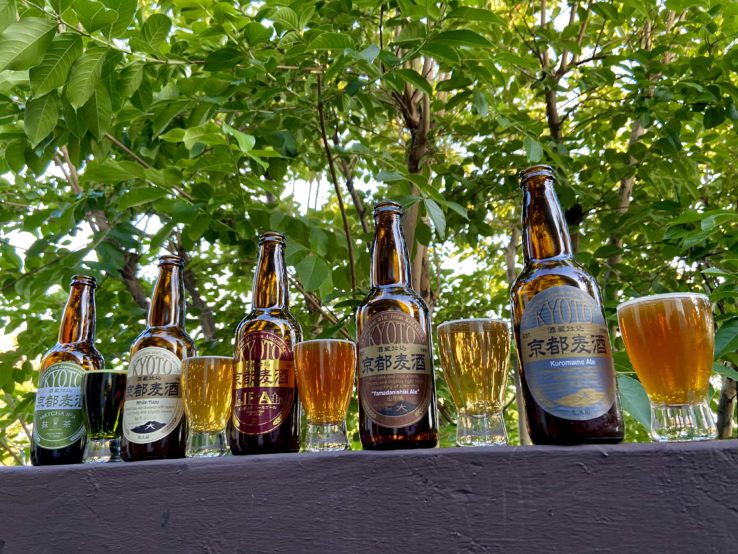
Comments
mel elias
Thanks for the great article – very interested to try this – I Iive in LA – where would I be able to buy these?
Eda Vuong
You should be able to find them at any of the usual Japanese grocery store chains! Mitsuwa, Nijiya, Marukai, and Tokyo Central.